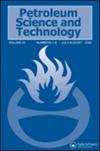波斯湾东部侏罗纪石油系统中石油的地球化学变异性
IF 1.4
4区 工程技术
Q4 ENERGY & FUELS
引用次数: 0
摘要
摘要 晚侏罗世石油系统在波斯湾东部的侏罗纪和白垩纪储层中形成了一个独特的油系。虽然这个油系中的油类与中苏尔米源岩在基因上有亲缘关系,但与其他油类相比,一些油类样本在地球化学方面出现了偏差。本研究的目的是更好地了解波斯湾东部侏罗纪石油家族 23 个石油样本之间的地球化学差异。为此,使用了石油样本的物理和化学特性、生物标记比率、稳定碳同位素数据和多元统计方法。通过对二十个来源相关参数进行化学计量分析,从侏罗纪石油系统石油中区分出三个基因亚家族(侏罗纪主亚家族、Resalat-Dariyan 和 Balal-Surmeh)。Balal-Surmeh 和 Resalat-Dariyan 样品根据沉积环境和成熟度参数与主亚族区分开来。Balal-Surmeh 样品显示出更多的海洋特征和较高的成熟度,这是由于二叠三叠统凝析油或志留纪 Sarchahan 页岩作为次生来源所造成的。看来,达里延地层富含有机质的低成熟夹层的石油生成量有限,导致雷萨拉特-达里延样本的成熟度较低。本文章由计算机程序翻译,如有差异,请以英文原文为准。
Geochemical variability of oils from Jurassic petroleum system in the east of Persian Gulf
Abstract The Late Jurassic petroleum system has created a distinct oil family in the Jurassic and Cretaceous reservoirs in the eastern part of the Persian Gulf. Although the oils in this oil family indicate genetic affinity with the Middle Surmeh source rock, some oil samples show geochemical deviation compared to others. The purpose of this study is to gain a better understanding of these geochemical differences among 23 oil samples from the Jurassic oil family in the eastern Persian Gulf. To achieve this, physical and chemical properties of oil samples, biomarker ratios, stable carbon isotope data, and multivariate statistical methods were used. The chemometric analysis of twenty source-related parameters differentiates three genetic subfamilies (Jurassic principal subfamily, Resalat-Dariyan, and Balal-Surmeh) from Jurassic petroleum system oils. The Balal-Surmeh and Resalat-Dariyan samples are distinguished from principal subfamily based on depositional environment and maturity parameters. The Balal-Surmeh samples show a more marine characteristics and a high maturity level due to the contribution of Permo-Triassic condensates or Silurian Sarchahan shales as a secondary source. It seems that the limited oil generation of the low mature organic-rich interlayers of Dariyan Formation caused a low maturity level in the Resalat-Dariyan samples.
求助全文
通过发布文献求助,成功后即可免费获取论文全文。
去求助
来源期刊

Petroleum Science and Technology
工程技术-工程:化工
CiteScore
2.90
自引率
13.30%
发文量
277
审稿时长
2.7 months
期刊介绍:
The international journal of Petroleum Science and Technology publishes original, high-quality peer-reviewed research and review articles that explore:
-The fundamental science of fluid-fluid and rock-fluids interactions and multi-phase interfacial and transport phenomena through porous media related to advanced petroleum recovery processes,
-The application of novel concepts and processes for enhancing recovery of subsurface energy resources in a carbon-sensitive manner,
-Case studies of scaling up the laboratory research findings to field pilots and field-wide applications.
-Other salient technological challenges facing the petroleum industry.
 求助内容:
求助内容: 应助结果提醒方式:
应助结果提醒方式:


